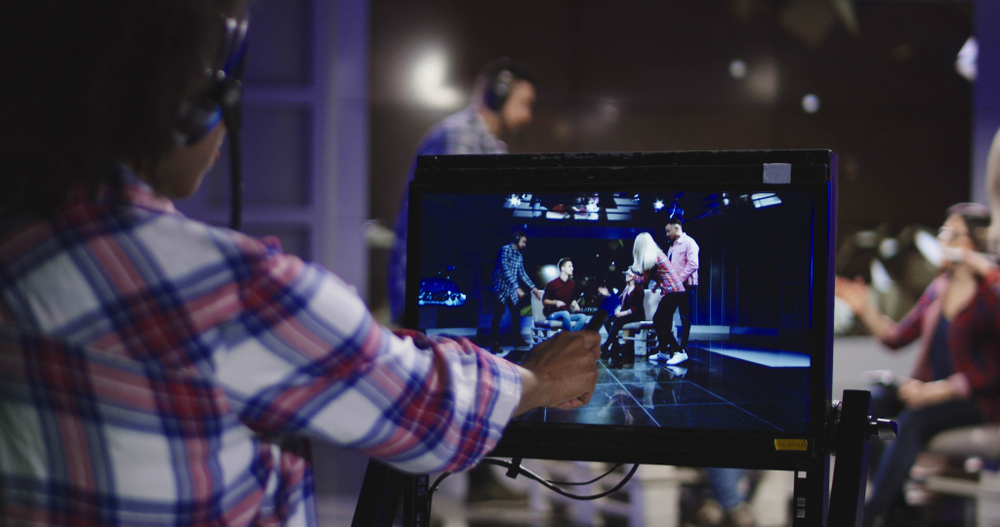Warning: Includes spoilers from BET’s Twenties and links to spoilers from HBO’s Insecure.
BET’s Twenties is a comedy series featuring three black women who are navigating their professional and personal lives in Los Angeles. Created by Emmy Award-winning artist Lena Waithe, the series features Jonica T. Gibbs as Hattie, a queer woman, and her two straight friends Marie (played by Christina Elmore) and Nia (played by Gabrielle Graham).
(Note: Elmore is better known to many of us as HBO Insecure character Condola Hayes, aka “Condominium,” aka “Condolences,” aka “Condensed Milk,” aka “Controlla,” aka “Conditioner.” My FordHarrison colleague Ikedi Onyemaobim recently discussed Insecure in a piece for this blog here.)
Particular Issues with Harassment by Supervisors
Among the throughlines for Twenties’ first season is Hattie being hired to work for renowned television producer Ida B. Hattie, who is attempting to work her way up from being a writers’ room personal assistant to an actual writer for Ida B.’s show Cocoa’s Butter, finds herself in multiple situations in which she and Ida B. are alone and seem to experience a certain kind of tension.
While nothing overtly romantic takes place on these occasions, the employment litigator in me could not help but consider that employers are generally liable for workplace harassment by supervisors like Ida B.
In its “Enforcement Guidance: Vicarious Liability for Unlawful Harassment by Supervisors,” the U.S. Equal Employment Opportunity Commission (EEOC) notes, “The standard for employer liability for hostile work environment harassment depends typically on whether or not the harasser is the victim’s supervisor.”
An employer is vicariously liable for a hostile work environment created by a supervisor. The EEOC further notes that an individual qualifies as a supervisor if he or she (1) has the authority to undertake or recommend a tangible employment decision affecting the employee or (2) has the authority to direct the employee’s daily work activities.
In Hattie’s case, Ida B. not only had the authority to take such actions but indeed hired Hattie, directed her daily work, and eventually fired her for sharing a script with a friend without Ida B.’s permission.
Notably, in sexual harassment cases brought under federal law (i.e., Title VII of the Civil Rights Act of 1964), employers may assert the so-called Faragher/Ellerth affirmative defense. The Faragher/Ellerth defense may foreclose or limit liability where an employer has implemented effective harassment reporting and investigation procedures but the employee has failed to take advantage of them. However, no such defense is available where supervisor harassment culminates in a tangible employment action—like Hattie’s termination by Ida B.
Intersectionality and Discrimination
Another Twenties first-season storyline concerns Marie’s attempt to secure a promotion for which she and another black studio executive—who is a man—are two of the top candidates. In attempting to advance professionally, Marie and her colleague Ben both attempt to convince former basketball player Quintrell to sign a deal with their studio.
Their boss Zach—who is white—engages in some questionable conduct in order to secure the talents of the retired black athlete, including having a black mailroom clerk sit in a meeting with Quintrell for no reason other than to have another black face in the room and asking Marie to use her connections so that Zach can accompany Quintrell to an exclusive black church in Los Angeles on Easter.
Ultimately, Ben is promoted over Marie. During a tense discussion, Zach tells Marie that Ben was selected over her because “his colleagues aren’t afraid of [Ben]” and “they see [Marie] as a threat.” Arguably, an inference could be made that Marie being black and a woman was part of Zach’s colleagues’ concerns. However, as the EEOC has noted in its Compliance Manual concerning intersectionality and discrimination:
Title VII prohibits discrimination not just because of one protected trait (e.g., race), but also because of the intersection of two or more protected bases (e.g., race and sex). For example, Title VII prohibits discrimination against African American women even if the employer does not discriminate against White women or African American men. Likewise, Title VII protects Asian American women from discrimination based on stereotypes and assumptions about them “even in the absence of discrimination against Asian American men or White women.” The law also prohibits individuals from being subjected to discrimination because of the intersection of their race and a trait covered by another EEO statute—e.g., race and disability, or race and age.
In other words, the studio would not necessarily be in the clear simply because another person in Marie’s racial category received a promotion instead of her.
An Ounce of Prevention …
I can’t help but wonder, “Did Ida B. participate in sexual harassment training as required under California law? In fact, such training is now available for free from the California Department of Fair Employment and Housing.” In addition to mandatory sexual harassment training, California employers are also generally required to develop and distribute a written policy to employees regarding the prevention of discrimination, harassment, and retaliation in the workplace.
Like they say, “An ounce of prevention is worth a pound of cure.” Even employers in states without mandatory workplace discrimination and harassment training and policy requirements should consult with counsel or a Human Resources professional to implement measures to prevent unlawful conduct in the workplace.
The post Employers in BET’s <i>Twenties</i> Test the Waters with Respect to Sexual Harassment and Discrimination appeared first on HR Daily Advisor.
